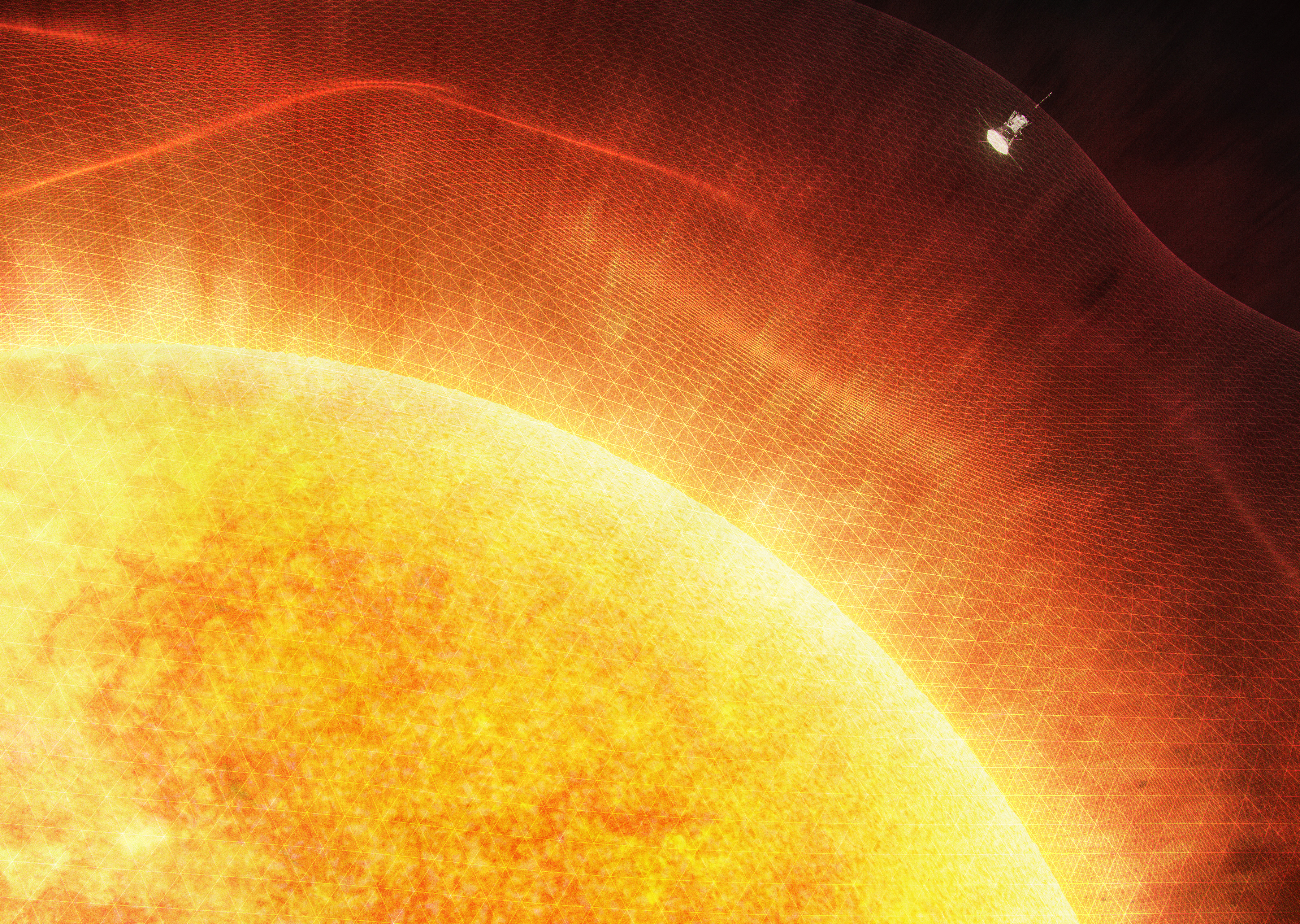Parker Solar Probe enters the magnetic atmosphere of the Sun
The NASA Parker Solar Probe mission has become the first spacecraft to enter the solar corona – the magnetically dominated atmosphere of the Sun. Researchers from the AU played a key role in the research confirming this historic event in space exploration.

Parker Solar Probe reaches the Alfvén critical surface, artists impression. Image: NASA.
Parker Solar Probe launched in 2018 to explore the mysteries of the Sun by traveling closer to it than any spacecraft before. Three years after launch and decades after first conception, Parker has finally arrived. Dr. Chen, from the Astronomy Unit, was part of the research team that confirmed this remarkable achievement, published today in Physical Review Letters.
Unlike Earth, the Sun doesn’t have a solid surface. But it does have a superheated atmosphere, made of solar material bound to the Sun by gravity and magnetic forces. As rising heat and pressure push that material away from the Sun, it reaches a point where gravity and magnetic fields are too weak to contain it. That point, which Parker Solar Probe crossed, is known as the Alfvén critical surface and marks the end of the solar atmosphere and beginning of the solar wind. Solar material with the energy to make it across that boundary becomes the solar wind, which drags the magnetic field of the Sun with it as it races across the solar system, to Earth and beyond. Importantly, beyond the Alfvén critical surface, the solar wind moves so fast that waves within the wind cannot ever travel fast enough to make it back to the Sun – severing their connection.
Until now, researchers were unsure exactly where the Alfvén critical surface lay. Based on remote images of the corona, estimates had put it somewhere between 10 to 20 solar radii from the surface of the Sun – 4.3 to 8.6 million miles. Parker’s spiral trajectory brings it slowly closer to the Sun and during the last few passes, the spacecraft was consistently below 20 solar radii (91 percent of Earth’s distance from the Sun), putting it in the position to cross the boundary – if the estimates were correct.
On April 28, 2021, during its eighth flyby of the Sun, Parker Solar Probe encountered the specific magnetic and particle conditions at 18.8 solar radii (around 8.1 million miles) above the solar surface that told scientists it had crossed the Alfvén critical surface for the first time and finally entered the solar atmosphere.
"Parker Solar Probe “touching the Sun” is a monumental moment for solar science and a truly remarkable feat," said Thomas Zurbuchen, the associate administrator for the Science Mission Directorate at NASA Headquarters in Washington. "Not only does this milestone provide us with deeper insights into our Sun's evolution and its impacts on our solar system, but everything we learn about our own star also teaches us more about stars in the rest of the universe.”
"This crossing of Parker Solar Probe into the magnetically-dominated solar corona is a really exciting moment for us," said Dr. Chen. "We've been wanting to know for a long time how plasma processes operate here, and importantly how they contribute to the intense heating of the solar corona to a million degrees and how they accelerate the solar wind to more than a million miles per hour. Also, we're exploring this region of space for the very first time, so there may be many unexpected discoveries too."
Over the coming years, Parker Solar Probe will continue getting closer to the Sun, eventually reaching just 8.86 solar radii from the surface.